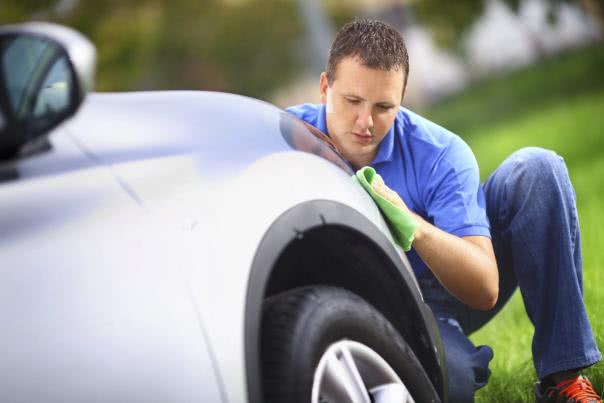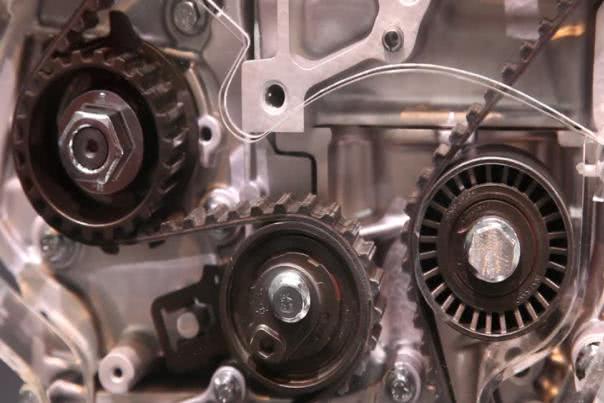For most Filipinos, a car is something more than just a status symbol; it’s a workhorse, a regular companion, even a part of the family. Various design and engineering tricks came together to result in that four-wheeled wonder sitting in your garage, your pride and joy. But no amount of technological gimmicks as yet can take away the most important aspect of car ownership.
Maintenance.
That’s right. Cars are considered depreciating assets for a reason: the more a car ages, the more money you have to part with just so it keeps running as smoothly as the day you first bought it (or close enough). People still rank maintenance costs quite highly among their considerations when shopping around for a new car, aside from sticker price and the number of features or accessories included.

For most Filipinos, a car is something more than just a status symbol; it’s a workhorse, a regular companion, even a part of the family
How easy is it to get spare parts in case something needs to be replaced? How long before a factory-spec component gives out, and how often does it happen? How much will it cost to check the vehicle when it reaches a certain mileage, and how big is the difference between dealerships in a given area? If a tight budget forces you to use aftermarket parts, will it affect the warranty?
Believe it or not, potential customers do balk at anything that might suggest less-than-budget-friendly maintenance. Spotty parts availability, costly upkeep and lackluster aftersales service are bound to be huge turn-offs.
For all the advancements we’re seeing in automotive technology thus far, cars are still not capable of taking care of themselves. Regular periods of exposure to varied driving conditions (with some benign, most are really, really stressful) will eventually run their course on your precious steed. Some parts are designed to last the life of the car, covered by the vehicle’s warranty, while others are not simply by virtue of their functions (friction parts like brakes or the clutch, for example).
Whether a fix can easily be undertaken by you or requires more specialized skills, the point is that your car constantly needs your diligent and watchful eye. Promptly addressing some of the more serious issues your car may have could translate to more expenses – and more headaches – avoided in the long run.

Potential customers do balk at anything that might suggest less-than-budget-friendly maintenance
1. Check carefully your car's tires
1.1 The state of your tires
The state of your tires, for instance, bears looking out for. Make sure your rubbers are still in a safe condition to be used, especially before a long drive. Check your tire treads to see if there is still adequate rubber touching the road, paying special attention to the grooves if they are deep enough to channel water away in wet driving conditions. Tires usually have an indicator that shows the point when they need to be replaced.
A more common method is using a coin to measure tread depth, by placing the coin upside down along a groove; if you can see the top of the head at the bottom of the groove, then it’s time to replace the tire. Have the tires rotated periodically to ensure that they are worn evenly.

Tires usually have an indicator that shows the point when they need to be replaced
1.2. The front tire alignment
The front tire alignment should be inspected, in case steering is harder than usual or if the steering wheel isn’t centered. On the inside, always maintain proper tire pressure as stated on the driver’s side door sill, give or take a few psi (pressure per square inch) to adjust for either ride comfort or fuel economy; this applies whether you’re still on factory-spec tires and wheels or have switched to aftermarket ones.
1.3. Tire inflation pressure
As a rule, never inflate to the maximum tire pressure indicated on your tire’s sidewall; if the tire is rated up to 50 psi, don’t go over 40. This is because a tire rolling at speed heats the air inside; when air heats, it expands and needs more room to move around. In a tire with maxed-out air pressure, the heated air will have nowhere to go, which could result in a blowout and have disastrous consequences for you and your car.
If you notice that your tires deflate faster than normal, you might have a puncture somewhere; any tire repair shop should be able to find it and patch it up for a minimal fee. When you do decide to get new tires, two at a time is recommended if you don’t have the budget for all four. New tire purchases should undergo tire balancing as well.
>>> See more: [Tire safety tips] How to prolong the lifespan of the tire?
2. Pay attention to the suspension system
The suspension system is next, as it is what supports the car and keeps it stable whenever you go through ruts on city roads or unleash your inner racer with spirited driving maneuvers on the highway. Shock absorbers will lose their ability to dampen bumps with time, and if they take just a little too long to spring back when you push down on the car, then new ones are in order. It is the same thing with the springs (coil and leaf types).
Worn-out bushings and ball joints also need to be replaced. A faulty suspension system will not only hurt your bum and your back, it also exposes the rest of the car to unnecessary vibrations and movement, which can accelerate wear and tear. To be sure, avoid engaging in spirited driving over less-than-ideal road conditions such as potholes, humps, ruts and the like; it’s always unsettling to hear something jiggling or jangling from the undercarriage every time the car goes through a rough patch of road.

A faulty suspension system will not only hurt your bum and your back, it also exposes the rest of the car to unnecessary vibrations and movement
3. Take a look at the ignition system
Having hard starts or frequent stalls even at the most inopportune times? The ignition system might need a look. Spark plugs (for gasoline cars) or glow plugs (for diesel vehicles) are responsible for your engine’s ignition sequence, and hard starts could mean that these are already worn out.
If there is a noticeable decrease in power, check the air and fuel filters to see if they haven’t been clogged yet. The fuel delivery system accumulated sediment over time, requiring periodic cleanup.
4. Take care of the timing mechanism
For engines with more than 100,000 kms on the odometer, a recalibration might be necessary for hard starts and seriously low power output. Another vital aspect of the engine is the timing mechanism, which controls the precise movement of the valves in the engine’s combustion cycle.
Timing chains and gears bring cost-efficiency due to reduced servicing, but engines still using the traditional rubber timing belts are at risk, since heat and pressure inside the engine can degrade the rubber over time.
A snapped timing belt can seriously damage the engine, leading to costly repairs or worse, outright engine replacement. Be sure to replace the timing belt according to the manufacturer’s intervals, typically every 75,000 to 80,000 kilometers.

Another vital aspect of the engine is the timing mechanism, which controls the precise movement of the valves in the engine’s combustion cycle
5. Check the oil level as a part of your pre-startup routine
Your car’s fluids are important too in keeping the car running smoothly, so it never hurts to check them as part of your pre-startup routine. Monitor your engine oil level and quality using the dipstick inside the engine bay; if the oil level is below the notch, you might need to top up on the current oil you’re using, as well as check under the car if there are leaks in your oil pan.
Replace the engine oil as needed (every 5,000 kms for regular oil, every 10,000 kms for synthetic) to avoid sludge buildup that can reduce your engine’s efficiency. Keep an eye on your coolant reservoir to make sure it doesn’t fall below the E (empty) mark, which could lead to your car overheating at an inopportune time.

Replace the engine oil as needed (every 5,000 kms for regular oil, every 10,000 kms for synthetic) to avoid sludge buildup
6. Preserve the light systems
Maintain your windshield washer fluid level, otherwise you’ll have nothing to clean your windshield with if outside visibility is compromised at speed. All of your lights should be in good working order, from the external ones such as headlights, taillights and signal lamps, to the interior cabin lights, dashboard indicators, even the trunk lamp.
>>> View related post: Easy ways to make your headlights shine like new

All of your lights should be in good working order, from the external ones
Burned-out bulbs or fuses need to be replaced promptly with new ones, damaged reflectors must be fixed, and dirty external light housings should be cleaned. Driving with no headlights or foglights in darkness will no doubt put you at risk for accidents, and a car with one working headlight might be mistaken for a motorcycle in the distance, which could lead to oncoming vehicles and pedestrians reacting accordingly. Of course, the importance of driving with working signal lights can’t be emphasized enough as well, to properly notify other drivers of your intentions.
7. Examine the electrical and airconditioning systems
The electrical and airconditioning systems need attention as well. Faulty and damaged wirings can result in false readouts on your instrument panel, apart from presenting a fire risk; this is especially true with substandard aftermarket installations such as for projector headlamps and third-party in-car entertainment systems.
If fuses need to be replaced to accommodate the new accessories, make sure they are of the appropriate rating. Periodically check the battery too, especially if it’s the maintenance-free type, as it often dies without warning; battery shops offer free testing to see if the battery can still hold a charge.
When using the airconditioning, watch out for moldy smells coming from the vents, usually a sign that they need cleaning. If the blower is working but no cold air is coming out, check to see if the radiator fan is working; if it doesn’t, have it repaired or replaced to avoid overheat.
8. Choose a proper service to repair your car
That’s not to say, however, that you have the sole responsibility of actually fixing what’s wrong with your car. Many car-related problems come with normal use of the car on a regular basis, and are quick fixes to boot. Others require a more professional approach, since not everything on a car is user-serviceable, and not all car owners have the time or the inclination to get their hands dirty.
Diagnostic devices such as OBD scanners serve as sort of a first alert, at least for cars with OBD ports, enabling owners to monitor certain functions using their mobile devices. But nothing beats the old-fashioned approach, which is to bring the car to the dealership or a third-party auto repair facility, have an actual mechanic take a look and discuss the options with the owner.

You have the sole responsibility of actually fixing what’s wrong with your car
For cars that are less than five years old, the factory’s periodic maintenance schedule lays out the things that need to be inspected, what needs to be replaced by what mileage, and which parts are covered by the warranty.
On the subject of parts, carmakers will tell you to stick with genuine ones to ensure optimum performance, while another school of thought says that aftermarket components perform at par, if not better than, branded ones at less cost. Both views have their merits, and it’s ultimately up to the owner how best to balance the cost and long-term performance.
Car maintenance is not just a matter of cost
However you decide, bear in mind that neglecting car maintenance is not just a matter of cost, but also peace of mind. Proper upkeep of your car is of absolute importance if it is to serve you in the years to come. You might save on a few thousand pesos now by skipping even the most basic maintenance items, but all that will ultimately add up to expenses when an issue takes a turn for the worst.
The best mindset to approach the subject of maintenance is to know your car inside and out; that way, nothing irregular or out of the ordinary will escape your attention, whether it’s an unusual sound, an odd smell, or generally a nagging feeling that your car is trying to tell you something.
More miles out of your car means more smiles for you
On the road, your car is your calling card, and how it looks and runs are reflections of how you see yourself. It doesn’t have to be showroom-ready all the time, only that everything works as it was designed and intended to be, whether for comfort, convenience or safety. Your passengers will appreciate it, pedestrians will appreciate it, and even other motorists will take notice. After all, well-maintained cars speak of owners who have self-respect and are considerate enough to place the well-being of others on the road alongside their own.
Recent posts
- do older cars have insurance coverage Oct 02, 2023
- cruise control increased fuel consumption Feb 24, 2023
- safe driving distance newbie guide Apr 11, 2023











